
Myathropa florea, sometimes referred to as the Batman hoverfly, is a very common European and North African species of hoverfly. Adults may be seen on flowers from May to September. It is of a similar size to the common drone fly, but Myathropa are generally more yellow, with two light bands to the thorax, interrupted with a black central smudge. In museum specimens, any yellow colour soon fades to brown after death. Like most species in the tribe Eristalini, Myathropa are rather variable in size, shape and colour.

Xylota sylvarum is a common Palearctic species of hoverfly.
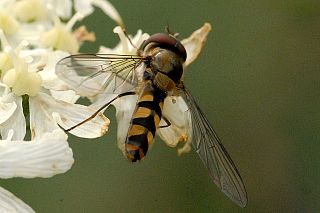
Meliscaeva auricollis is a West Palearctic species of hoverfly.

Criorhina berberina is a species of hoverfly. It is found in the Palaearctic from Fennoscandia South to Iberia and Italy. Ireland eastwards through Europe into Turkey and European Russia . C. berberina is a bumblebee mimic. The body has uniformly long dense pubescence, obscuring the ground-colour. There are two forms one with the pubescence more or less extensively blackish, one in which it is entirely yellow or tawny. Criorhina differ from other bumblebee mimics - Mallota, Arctophila, Pocota and Brachypalpus by the form of their antennae: the first segments are thin and form a stalk, the third segment is shorter than it is wide. In Criorhina, the face projects downwards, in contrast to Pocota and Brachypalpus.
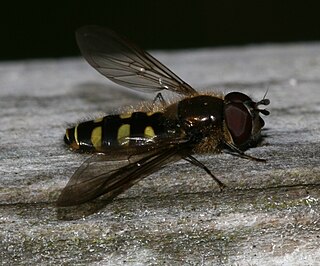
Melangyna lasiophthalma is a Holarctic species of hoverfly.

Fagisyrphus cinctus is a European species of hoverfly. This species has a muddled taxonomic history. Older authors treated it as a member of the genus Melangyna, and later sources in Meligramma, but the most recent sources recognize it as the sole species in its own monotypic genus, Fagisyrphus.

Cheilosia grossa is a widespread European species of hoverfly. Adults can be found in spring on sallow catkins and the larvae tunnel in the stems of various thistle species.

Criorhina floccosa, is a species of hoverfly. It is found in many parts of the Palearctic including Europe.
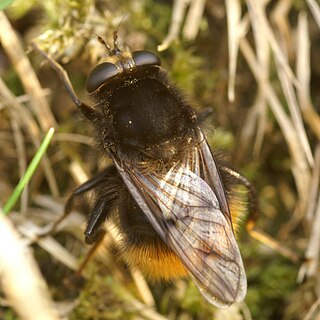
Criorhina ranunculi, is a species of hoverfly found in the spring in many parts of Britain and Europe.

Anasimyia lineata is a Palaearctic species of hoverfly.
Melangyna arctica is a Holarctic species of hoverfly.
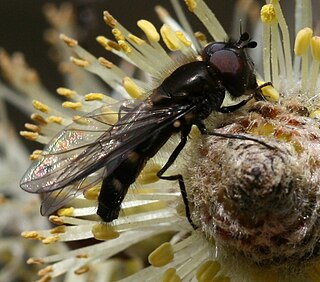
Melangyna quadrimaculata is a European species of hoverfly.

Brachypalpoides lentus is a European species of hoverflies.
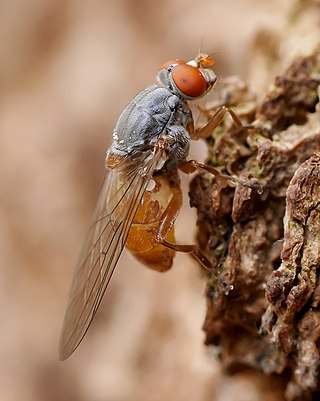
Brachyopa insensilis is a Palearctic species of hoverflies.

Brachyopa scutellaris is a European species of hoverfly.

Xylota tarda is a Palearctic species of hoverfly.

Lejogaster tarsata is a Palearctic hoverfly

Mallota cimbiciformis is a Palearctic hoverfly.

Caliprobola speciosa is a Palearctic hoverfly. It is an ancient woodland bioindicator.
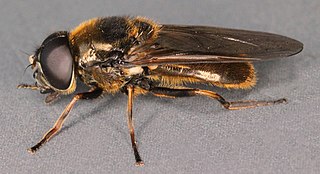
Cheilosia fraterna is a Palearctic hoverfly.



















